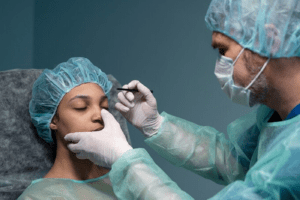Jaw surgery, also known as orthognathic surgery, is a corrective procedure designed to fix irregularities in the jaw bones. It can improve both function and facial appearance. People consider jaw surgery for a range of reasons, including misaligned jaws, difficulty chewing or speaking, chronic jaw pain, and facial imbalance. The decision to proceed is often based on functional needs rather than purely cosmetic goals.
Jaw surgery becomes necessary when the jaws do not meet properly or when the teeth do not fit together even after orthodontic treatment. This condition may be due to genetics, trauma, or developmental issues. Orthodontics usually precede and follow jaw surgery to align the teeth appropriately.
Types of Jaw Surgery
There are several types of jaw surgery depending on which part of the jaw needs correction. Each type addresses a specific condition, and the choice depends on a comprehensive examination by an oral and maxillofacial surgeon.
Read Also>>>Best and Most Affordable Countries for Plastic Surgery
Maxillary Osteotomy
Maxillary osteotomy involves the upper jaw. This type of jaw surgery is performed when the upper jaw is too far forward or back, or if it has grown asymmetrically. This surgery can address an open bite, crossbite, or significant underbite.
The procedure involves making cuts in the bone of the upper jaw, then moving it into a more balanced position. The bone is then stabilized with plates and screws. This corrects issues such as a gummy smile, difficulty chewing, and problems with speaking.
Mandibular Osteotomy
Mandibular osteotomy focuses on the lower jaw. This surgery is typically done when the lower jaw is receded or protruding too far forward. Problems that may be addressed include sleep apnea, improper bite, or difficulty closing the mouth.
In this procedure, the surgeon cuts behind the molars and down the jawbone. The jaw is then repositioned and fixed in place using medical screws. Recovery often includes temporary jaw wiring to ensure stability during healing.
Bimaxillary Osteotomy
Bimaxillary osteotomy refers to surgery that involves both the upper and lower jaws. It is usually performed when significant correction is needed for proper alignment. This is one of the more complex forms of jaw surgery and typically involves a longer recovery time.
It can dramatically improve the bite, facial symmetry, and airway structure. Patients with severe overbites or underbites may benefit most from this surgery.
Genioplasty
Genioplasty focuses on the chin. While not always classified under jaw surgery, it is often performed in conjunction with other procedures to create better facial harmony. Genioplasty can correct a weak or overly prominent chin, improving the overall facial profile.
Surgeons may either remove or add bone or even use implants to achieve the desired result. When done alongside jaw surgery, it helps refine the lower facial third.
How to Prepare for Jaw Surgery
Preparation for jaw surgery begins with detailed assessments. These include X-rays, dental impressions, and 3D imaging. The surgical team collaborates with orthodontists to plan the treatment timeline.
Orthodontic treatment often begins months before surgery to align the teeth. A complete evaluation includes discussing health history, medications, and the expected outcome of surgery. Patients may need to avoid certain medications and follow preoperative instructions closely.
Nutrition plays a role as well. Before surgery, a patient may be advised to increase protein intake and ensure overall health. Instructions on fasting and medications are provided to prepare for anesthesia.
The Jaw Surgery Procedure
Jaw surgery is performed in a hospital under general anesthesia. It can last from two to five hours depending on the complexity. Surgeons make incisions inside the mouth to avoid visible scars. The bones are carefully cut and repositioned.
Plates, screws, or wires hold the bones in their new alignment. In some cases, bone grafts are used to fill gaps or add volume. The goal is to create a jaw structure that improves function and appearance without changing facial features unnaturally.
Hospital stay ranges from one to three days. Patients are monitored for swelling, bleeding, and infection. Pain is managed with prescribed medications.
Postoperative Recovery and Expectations
Recovery from jaw surgery takes time and patience. Initial swelling and bruising peak within the first few days but gradually subside over a couple of weeks. Pain is common but can be controlled with medication.
The first week involves a liquid or soft food diet. Eating through a syringe or straw is common. Gradually, the diet shifts to more solid foods as the healing progresses. Talking and chewing are limited during the early stages.
Sleeping upright helps reduce swelling. Cold compresses can also relieve discomfort. Oral hygiene is crucial to prevent infection. Patients may be instructed to rinse with salt water or antiseptic mouthwash.
Follow-Up and Long-Term Care
Frequent follow-up appointments help monitor healing. X-rays may be taken to ensure the bones are fusing properly. Orthodontic treatment usually continues for several months post-surgery to refine bite alignment.
Complete bone healing typically takes six to twelve weeks. For some, full recovery including dental adjustments and bite stabilization can take a year. Throughout the recovery, the surgical team tracks nerve function, jaw movement, and overall progress.
Long-term care includes maintaining oral health, attending regular dental visits, and adhering to any dietary restrictions. Complications are rare but may include infection, nerve damage, or the need for revision surgery.
Benefits of Jaw Surgery
Jaw surgery can offer both functional and aesthetic benefits. Many patients report improvements in chewing, breathing, and speaking. For others, it provides emotional and psychological relief from longstanding concerns about facial imbalance or asymmetry.
The benefits include:
-
Correct bite problems
-
Alleviate jaw joint pain
-
Improve facial harmony
-
Enhance breathing in sleep apnea
-
Resolve speech issues
-
Reduce excessive wear on teeth
Patients also report improved self-confidence and quality of life after healing.
Risks and Considerations
All surgeries carry some level of risk. For jaw surgery, potential risks include:
-
Infection
-
Bleeding
-
Relapse of jaw position
-
Numbness due to nerve involvement
-
Poor wound healing
-
Dental damage
Selecting a qualified surgeon and following postoperative instructions reduce these risks. Realistic expectations and thorough planning contribute to a successful outcome.
Alternatives to Jaw Surgery
For patients with mild to moderate problems, non-surgical treatments may be considered. These include orthodontics, dental appliances, or physical therapy. While they may not provide permanent correction, they can offer relief for specific symptoms.
Clear aligners or braces can shift teeth to improve bite. Night guards can reduce jaw pain from grinding or clenching. These options are more conservative and often used when surgery is not suitable or needed.
Is Jaw Surgery Worth It?
Many who undergo jaw surgery report high satisfaction. When performed for medical reasons, the results often go beyond appearance. Patients experience long-term relief from pain, discomfort, and social anxiety related to dental and facial issues.
The key to a successful experience lies in choosing a reputable oral and maxillofacial surgeon, having a personalized treatment plan, and committing to recovery protocols. While the journey can be long, the benefits are often significant and lasting.


















